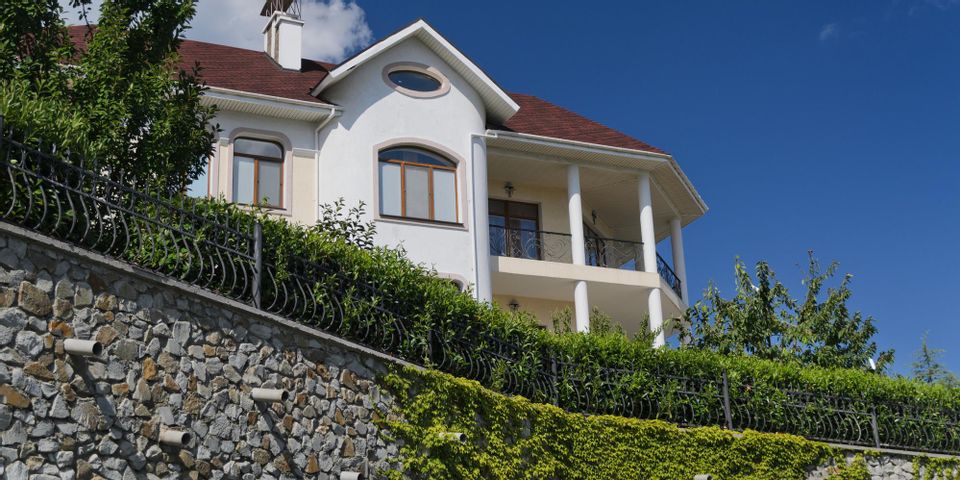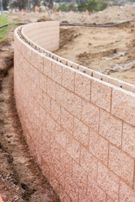What is a Mechanically Stabilized Earth Retaining Wall?

Over the years, site development on land that has uneven, multi-grade terrain has become more manageable with the use of mechanically stabilized earth (MSE) and concrete retaining walls. Both serve the purpose of holding back soil and providing support for slope retentions, but MSE walls have become the preferred option by most builders, contractors, and property owners. Here’s what you need to know about these structures.
What Are Its Applications?
MSE retaining walls consist of alternating layers of compacted backfill and soil reinforcement elements affixed to a facing that is typically made of precast, segmental blocks, panels, wire mesh, or geocells. The interlocking of backfill, reinforcements, and blocks allows the gravity-retaining wall to handle differential movements in the soil, making them ideal in areas with relatively high seismic activity. They can be used for construction site development with loose soil conditions, retention structures for dikes and highways, bridge abutments, wing walls, and the building of dams and levees. In certain instances, they are built to contain oil and gas storage tanks for safety.
How Are They Different From Concrete Walls?
 Although concrete and MSE walls offer the same functionality, the latter is considered more cost-effective. Reinforced concrete walls were more commonly used in the past, but as rigid structures they are unable to handle considerable differential settlements unless they are built with deep foundations. This requires extensive site development to improve subsoil conditions, more construction time, and higher costs. MSE walls, on the other hand, can be constructed more rapidly, with fewer costs, and with minimal use of heavy equipment.
Although concrete and MSE walls offer the same functionality, the latter is considered more cost-effective. Reinforced concrete walls were more commonly used in the past, but as rigid structures they are unable to handle considerable differential settlements unless they are built with deep foundations. This requires extensive site development to improve subsoil conditions, more construction time, and higher costs. MSE walls, on the other hand, can be constructed more rapidly, with fewer costs, and with minimal use of heavy equipment.
Why Use Them On-Site?
There are a number of benefits to choosing MSE retaining walls over concrete ones, such as rapid and simple construction, less site preparation, reduced excavation works for footings, and significant resistance to seismic load and other dynamic forces. Since they can be constructed in confined areas, more land is available for development. They can be built at great heights and on poor soil, while effectively handling differential settlement as lateral pressure is distributed over the foundation area. Before construction, ensure that the foundation is well compacted and leveled. Once building has begun, avoid excavating in front of the wall to ensure that it remains stable.
When you need to construct an MSE wall for site development, rely on the experts at Musson Brothers. As one of the leading excavating and paving contractors in Oneida County, WI, they’ve consistently provided top-notch excavation and construction services to numerous businesses throughout the area for over 70 years. They are committed to friendly customer service and always meeting their clients’ needs. Call (715) 365-8700 to consult with a professional or visit their website for more information.
About the Business
Have a question? Ask the experts!
Send your question

